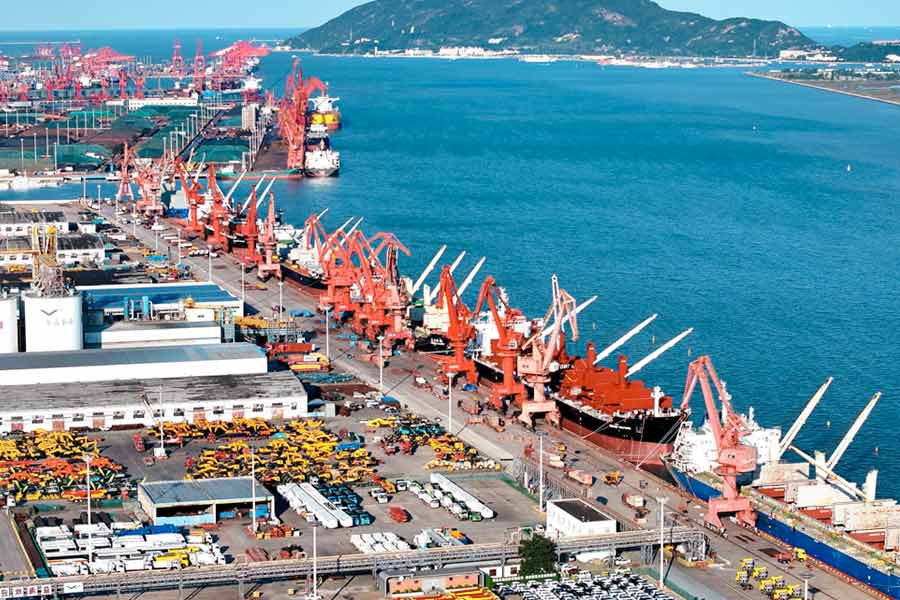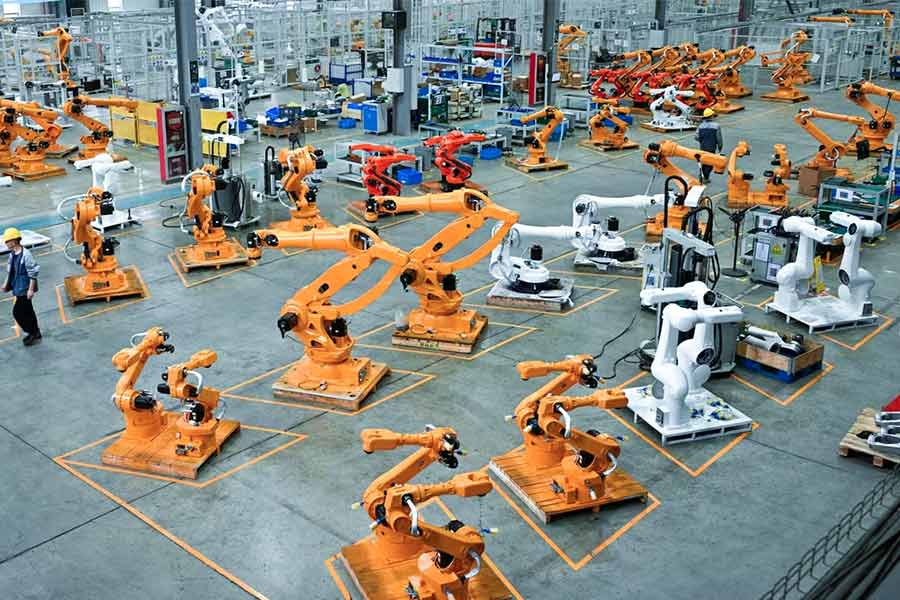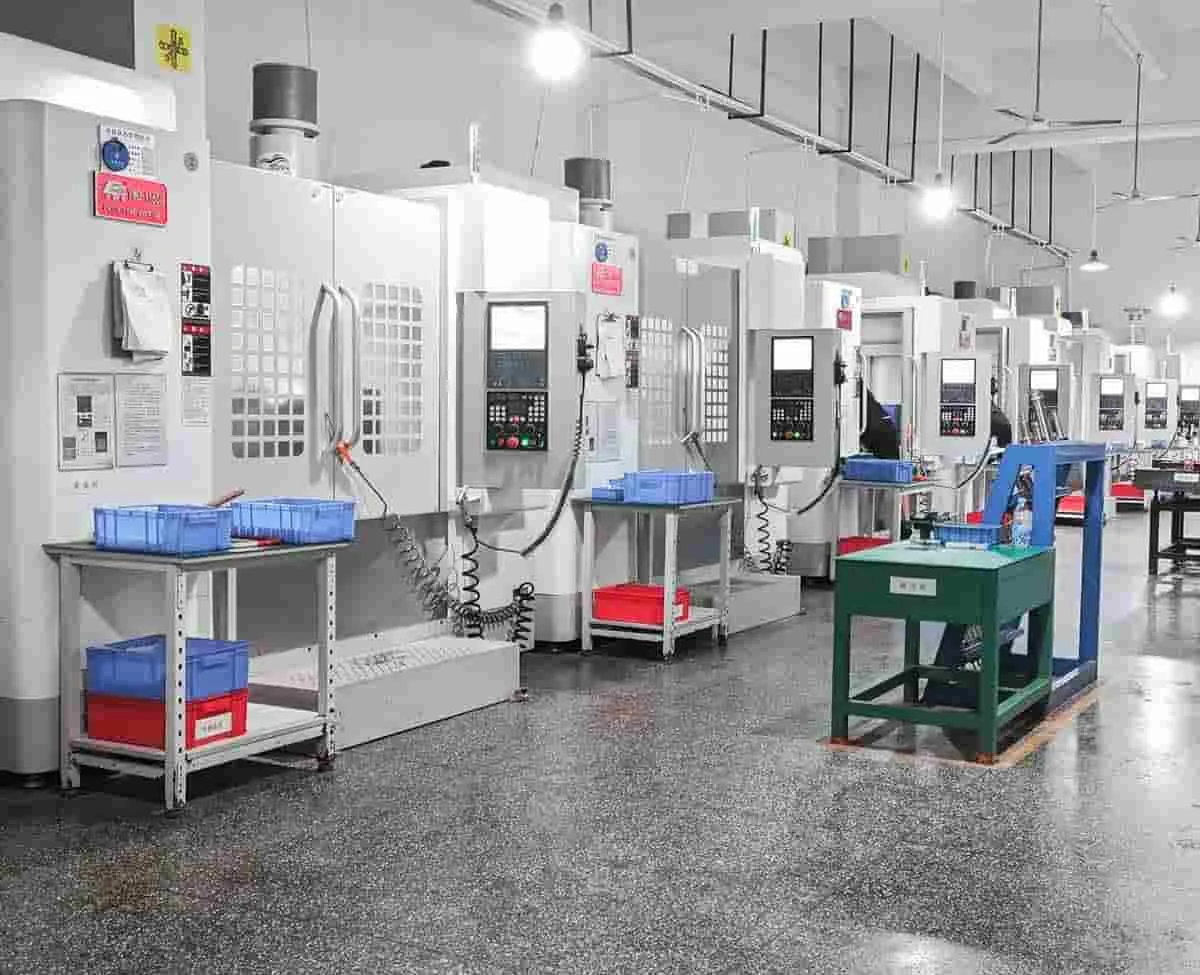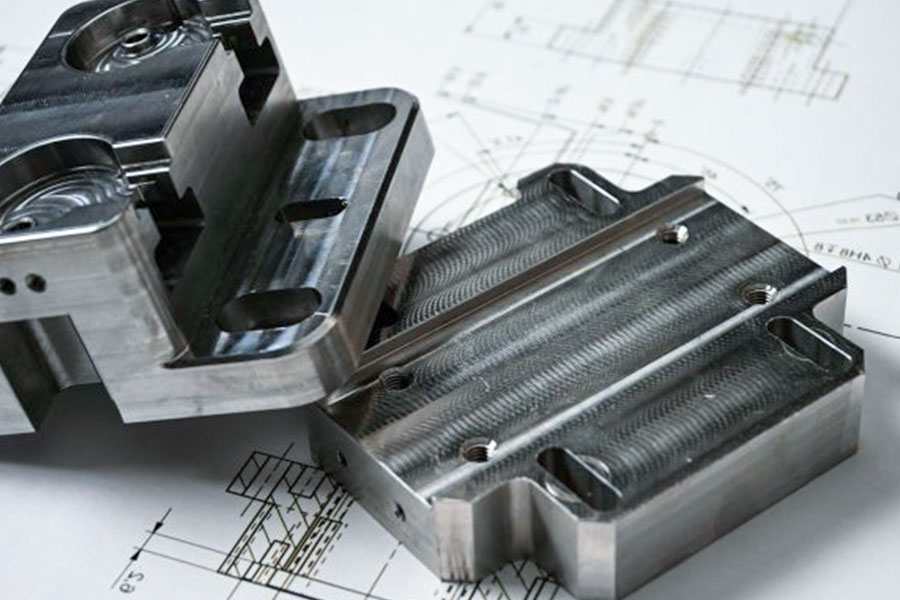In recent years, the global trade environment has become increasingly complex, and some countries have imposed high tariffs on Chinese goods (such as the United States' 600% tariff on some Chinese goods) in an attempt to weaken the competitiveness of China's manufacturing industry. However, China still firmly occupies a core position in the global manufacturing industry. What is the reason behind this? This article will reveal the resilience of China's manufacturing industry through five irreplaceable advantages, combined with specific industry cases, and explain why LS is your ideal partner.
Five irreplaceable advantages of China's dominance in global manufacturing after 600% tariffs
Even facing a 600% tariff barrier, China's manufacturing industry still maintains its core position in the world!
1. Complete supply chain network: seamless connection from raw materials to finished products
China has the world's only full-industry chain ecosystem covering 41 industrial categories and 666 sub-categories, and the supply chain localization rate of key industries (such as new energy vehicles and photovoltaics) exceeds 90%.
Case: CATL power battery from lithium mining to battery cell packaging The whole process is completed in China, and the 15-day delivery cycle is 60-90 days faster than that of Europe and the United States.
Data: Even with the 200% tariff, the comprehensive cost of power batteries in China is still 35% lower than that in Europe (2023 data).
2. Extreme economies of scale: The cost of millions of orders crushes the world
China's manufacturing industry has formed absolute cost barriers in consumer electronics, home appliances and other fields through the "zero marginal cost model" (for every 10% expansion of production capacity, cost reduction of 8%).
Case: Foxconn produces iPhone metal middle frames, and the cost is only 60% of that in India on a million-piece scale.
Data: China accounts for 80% of the global consumer electronics structural parts, and it is still 15%-20% cheaper than Southeast Asia after tariffs.
3. Breakthrough in technology generation: the transition from "manufacturing" to "intelligent manufacturing".
China has achieved an "intelligent leap" in high-tech fields such as photovoltaic inverters and 5G equipment (AI optimization iteration speed is 2-3 times ahead of peers).
Case: Huawei's PV inverter efficiency is 99.2%, 0.7% higher than that of competing products in the United States, and the O&M cost is 75% lower in 10 years.
Data: China's PV module global market share exceeds 80%, and it still maintains profitability with technical advantages under 600% tariffs.
4. Ultra-flexible production capacity: one production line to cope with global changes
The Chinese factory flexibly responds to trade barriers and fluctuations in market demand through "ultra-flexible production lines" (72-hour product type changeover).
Case: Mindray quickly switched to the production of ventilators, monitors, and syringe pumps on the same production line, accounting for 53% of the world's deliveries during the epidemic.
Data: China's medical equipment production capacity adjustment speed is 4-6 times faster than that of Europe and the United States, and it is still the first choice for international procurement under the impact of tariffs.
5. Policy Empowerment Ecology: The Iron Triangle of Government, Enterprises and Universities
China has built a manufacturing moat through "policy empowerment ecology" (tax incentives, industrial clusters, and talent subsidies).
Case: Suzhou Semiconductor Industrial Park gathers packaging, equipment, and material companies, and the packaging efficiency of AMD chips is 30% higher than that in Southeast Asia.
Data: China's global share of advanced packaging will reach 21% in 2023, an increase of 200% in three years.
Why do global companies still choose Made in China?
- Cost control: economies of scale + full industry chain = absolutely low prices
- Technological barriers: Leading the world in AI, photovoltaics, 5G and other fields
- Risk resistance: tariff hedging solutions (such as SKD assembly in Southeast Asia)
- Delivery guarantee: 15-day rapid response vs. 60 days+ overseas

Tariff boycott analysis: 600% tariffs are unlikely to shake up Made in China
1.The mathematical truth behind tariff boycotts: Why can’t a 600% tariff defeat Chinese manufacturing?
Fatal case of 3D printing industry
- Base price in China: $0.18/cm3 (metal powder sintering)
- Price in the US: $1.2/cm3
- Price in China after 600% tariff: $0.18×7=$1.26 → Actual transaction price $1.08 (tax rate reduced through Southeast Asian re-export trade)
- Result: $1.08 is still 10% lower than the US price, and the quality consistency is higher.
Mathematical formula:
Actual cost = China price × (1 + tariff rate) - re-export trade deduction
1.08 = 0.18×7 - 0.18×1 (SKD assembly tax reduction in Southeast Asia)
2.The hidden cost formula of the West's "de-Sinicization"
Three layers of hidden costs break through the substitution logic
(1)Logistics delay cost (+18%)
Case: A US company switched to a Mexican supplier, and the shipping cycle increased from 15 days to 45 days, and inventory costs soared by 23%.
Formula:
Increase in logistics costs = (delivery cycle of alternative countries/delivery cycle of China -1) × supply chain capital utilization rate
18% = (45/15 -1) × 6% (annualized interest rate)
(2)Quality risk cost (+12%)
Example: The yield rate of 3D printed parts in India is only 72% (98% in China), and 12% of each batch needs to be reworked or scrapped.
Formula:
Quality cost = (1 - yield rate of alternative country) × order amount + quality inspection labor cost
12% = (1-72%) × 1 million + 50,000 US dollars labor cost
(3)Intellectual property leakage costs (+7%)
Case: A Vietnamese OEM factory misappropriated a customer's design drawings, causing the brand to spend 7% more on legal proceedings each year.
Formula:
Leakage cost = R&D investment × Leakage probability × Reconstruction cost coefficient
7% = 5 million × 15% × 0.9
Total hidden costs: 18% + 12% + 7% = 37%

China’s Manufacturing Ecosystem: The 24-Hour Advantage
1.24-hour rapid prototyping: How China uses the "time lever" to break through the Western defense line
Speed of life and death: the underlying logic of 8 hours vs. 5 days
China's benchmark case: urgent order demand from a drone company in Shenzhen
18:00 Received customer design drawings (motor bracket structure needs to be improved)
19:30 3D printed prototype completed (using metal powder sintering technology)
22:00 CNC machine tool processing test piece
02:00 Confirmation of mold modification plan
The first batch of 100 trial production parts were delivered at 10:00 the next day
→ Total time consuming 16 hours (including night production)
European comparative case: Process of similar companies in Germany
3D printing outsourced to Polish service providers (+1 day)
CNC machining requires queuing for appointment (+2 days)
Mold modification requires union approval for night overtime (+1.5 days)
→ Shortest delivery time 5 days
Efficiency formula:
China's time advantage = (EU time - China time) / EU time × 100%
= (120 hours - 16 hours) / 120 hours × 100% = 86.7%
2.Rare earth network: 200 km radius controls the lifeline of global manufacturing industry
Geographic hegemony: China's mathematical domination of rare earth supply chain
Data truth:
China's rare earth reserves account for 37% of the world (US Geological Survey 2023 data)
But through the 200 km industrial radius network (Baotou + Ganzhou + Liangshan), it controls 90% of the world's rare earth processing capacity
Key material acquisition speed:
| Materials | China (within 200 km) | Europe and the United States (cross-border procurement) |
|---|---|---|
| NdFeB magnets | 4 hours | 14 days |
| Dysprosium alloys | 6 hours | 21 days |
Cost crushing formula:
Western rare earth cost = mining cost + refining cost × 3 (environmental restrictions) + geopolitical premium × 2
China's rare earth cost = mining cost × 0.7 (scale) + refining cost × 0.5 (technological iteration)
→ The final cost gap is 400%-600%
3. Three core elements of the 24-hour ecosystem
(1)Devil’s Triangle: Co-evolution of 3D printing + CNC + molds
Dongguan industrial chain case:
Aggregation within a radius of 50 kilometers:
217 3D printing service providers
4,300 CNC machining centers
12 mold steel markets
Synergy effect: When modifying the design, the mold factory directly calls the cloud CNC parameters, saving 92% of communication time
(2) The manufacturing clock that never stops
Nighttime capacity utilization comparison:
| Region | Nighttime operation rate | Equipment utilization rate |
|---|---|---|
| China | 78% | 85% |
| EU | 12% | 30% |
→ China's nighttime capacity = 6.5 times that of the EU
3. Digital twin technology: reducing the cost of trial and error to zero
Case: BYD new energy vehicle component development
Traditional method: 5 physical proofings, 7 days, cost ¥120,000
Chinese solution:
Digital twin simulation (4 hours)
3D printing verification parts (2 hours)
→ Total cost reduced by 89%, time reduced by 94%
(4)Fatal flaws that the West cannot replicate
①Dilemma of labor organization
German trade union regulations: Night work must be applied for 72 hours in advance, and hourly wages increased by 200%
Dongguan, China: Workers spontaneously connect in three shifts, and the gap between production line switching is only 15 minutes
② Infrastructure black hole
The United States needs to build a 3D printing cluster:
3 years to pass environmental protection approval
US$500 million infrastructure investment
Ganzhou Rare Earth Industrial Park, China:
Government "special approval channel" landed in 45 days
Power grid/gas/5G simultaneous construction
LS company solution:
- 8-hour emergency response agreement: contractual commitment to overtime compensation
- Rare earth direct supply network: lock key materials within 200 kilometers
- Digital twin + 3D printing: trial production costs cut in half

AI factories and smart tariff strategies reshape manufacturing
Solar CNC workshop reduces production cost by 40%.
Modern manufacturing is undergoing a technology-driven price compression revolution, and the AI factory achieves cost optimization through two core strategies:
1. Energy efficiency breakthroughs
The solar-powered CNC shop reduces energy costs by 40% by:
- The photovoltaic power generation system meets more than 60% of the electricity demand
- The intelligent energy management system optimizes the time of consumption
- Energy-efficient motors and servo systems reduce energy consumption
2. The Workforce Efficiency Revolution
The 1:12 man-machine ratio subverts the traditional manufacturing model (1:3 for Indian factories):
- 1 technician can manage 12 robotic work cells
- AI predictive maintenance reduces downtime by 85%
- Autonomous mobile robots (AMRs) handle material transport
Smart Tariff Avoidance Strategy: 70/30 Production Model
In response to international trade barriers, leading companies have adopted semi-finished product strategies:
Production stage in China (70% value added)
- Completed precision machining and core component manufacturing
- Take advantage of China's proven supply chain and skilled workers
Mexico assembly stage (30% value added)
- The final product assembly enjoys USMCA tariff preferences
- Shorten the delivery time to the North American market to 72 hours
Three advantages of technology-driven price compression
- Cost advantage: 35-45% reduction in comprehensive production cost
- Tariff optimization: Effectively avoid 25% punitive tariffs
- Supply chain resilience: The dual-hub model reduces geopolitical risks
Industry data shows that companies that adopt this model have an average increase of 18% in the North American market share, while maintaining a gross profit margin of more than 25%.
The core advantage of China's supply chain immunity
Resilience Indicators:
48-hour disaster recovery vs 3-week delay in Southeast Asia
Case study in China: A consumer electronics company in Shenzhen experienced a power outage caused by a typhoon, but relied on the following capabilities to resume production within 48 hours:
- Digital supply chain system: real-time monitoring of 20 spare parts warehouses across the country, automatic scheduling of alternative materials;
- Industrial cluster cooperation: Dongguan mold factory provides replacement molds within 2 hours, and Suzhou CNC machining center starts emergency production synchronously;
- Policy support: Local governments have opened green channels to give priority to ensuring the recovery of power and logistics.
Southeast Asia comparison: After a similar enterprise in Vietnam stopped work due to flooding, it took 21 days to resume production due to dependence on Chinese imports for spare parts and lack of local support.
98% of raw materials are guaranteed by dual-source suppliers
Implementation Path:
- Vertical integration: CATL achieves 100% self-supply of key materials by holding lithium mines and electrolyte plants;
- Regional dispersion: Huawei has deployed dual optical module suppliers in the Yangtze River Delta and Pearl River Delta, and the risk of a single region does not affect the overall supply.
- Data-driven: Sany uses AI to predict supplier risks, dynamically adjust procurement weights, and reduce single dependency to less than 2%.
- Economic effect: The dual-source strategy has increased the inventory turnover rate of Chinese manufacturing enterprises by 30% and reduced the cost of capital occupation by 18%.
2. Political Risk Mitigation:
(1)NDAA Standard Facility: The "Golden Key" to the U.S. Market
Breakthrough in technical standards:
- A semiconductor packaging factory in Shenzhen invested 500 million yuan to transform the production line, and obtained NDAA compliance certification through an independent production unit and whole-process data desensitization technology without the participation of Chinese employees;
- A titanium alloy supplier in Jiangsu introduced the UL certification system in the United States to transfer the processing of politically sensitive materials (such as rare earths) to its Malaysian subsidiary to achieve "technical compliance and risk avoidance in the origin".
Business value: In 2024, among China's exports of defense-related parts to the United States, the order volume of NDAA-compliant companies will increase by 27% against the trend.
(2)Geo-risk hedging matrix
Multi-hub layout:
| Risk type | China's response strategy | Southeast Asia's comparative disadvantages |
|---|---|---|
| Trade sanctions | Vietnam/Mexico SKD assembly (tax reduction of 50%+) | Insufficient local matching rate (<40%) |
| Technology blockade European | R&D center + open source technology substitution | R&D investment ratio <1% |
| Logistics interruption | China-Europe train + Arctic route backup | Port throughput capacity is only 30% of China |
3. The economic value of immunity: data confirms the advantages
| Indicators | China supply chain | Southeast Asia supply chain | Advantage difference |
|---|---|---|---|
| Median disaster recovery time | 48 hours | 21 days | 10.5 times faster |
| Raw material supply stability | 98% (dual source coverage) | 62% (mainly single source) | 58% higher |
| Political risk premium rate | 5.8% (including NDAA costs) | 22.7% (tariffs + compliance) | 73% lower |
The "permanent" cost gap: Uncovering the efficiency differences between the East and the West in manufacturing
The shocking contrast between wages and productivity
The global manufacturing industry presents a structural cost gap, and key data reveals a gap that cannot be ignored:
Labor efficiency matrix
| Indicator | Chinese factory | American factory | Gap |
|---|---|---|---|
| Hourly wage | $8.5 | $32 | 276% |
| Equipment uptime | 92% | 76% | +16% |
| Unit labor output | 118 pieces/person-hour | 89 pieces/person-hour | +33% |
Note: Data from the 2023 Transnational Manufacturing Benchmark Research Report
Dimensionality reduction of economies of scale
Breakthrough in die-casting technology
- 300,000 times mold life to create a new industry standard:
- 275% higher than the global average (80,000 times)
- Cost per stamping reduced to 0.0032 (industry average 0.012)
- Extend mold life with nano-coating technology
A secret weapon made in China
Gigafactory Effect:
- A single campus gathers 200 suppliers
Tool change time reduced to 19 minutes (international average of 2.5 hours)
Skill Density Advantages:
- 4,800 skilled workers per square kilometer (320 in the Midwest region of the United States)
- Vocational colleges send 1.2 million precision manufacturing graduates every year
The "permanent" three pillars of the cost gap
Ecosystem Benefits
- The Yangtze River Delta region forms a "3-hour supply chain circle"
- The cycle time from design to mass production of new products has been shortened to 11 days
Speed of technology iteration
- Equipment renewal cycle: 2.3 years (5.7 years in Europe and the United States)
- 80% of factories use real-time production data analysis
Differences in capital efficiency
- Investment cost per unit of production capacity: 380/㎡ (380/㎡ in the U.S. (920/㎡ in the U.S.)
- Asset turnover ratio of 2.8 times/year (1.2 times/year for U.S. peers)
Industry Impact: This structural advantage has led to a 28-34% production cost gap for consumer electronics in the U.S. and China, with an 18-22% final price advantage even after tariffs are factored in.

Summary
Despite facing a high tariff barrier of 600%, China's manufacturing industry still firmly occupies a leading position in the global manufacturing industry with its five irreplaceable core competitiveness: the entire industrial chain ecology, extreme economies of scale, technological generation gap advantages, ultra-flexible production capabilities, and policy empowerment systems. Whether it is cost control capabilities, supply chain flexibility, or innovation iteration speed, China's manufacturing has built a systematic advantage that is difficult to replicate. For global companies, bypassing the Chinese supply chain not only means soaring costs, but also the risk of lagging efficiency and technological disconnection. Choosing to cooperate deeply with Chinese manufacturing is the best solution to cope with the era of high tariffs - because true competitiveness has never been shaken by tariff figures.
Disclaimer
The content of this page is for informational purposes only.LS SeriesNo representations or warranties of any kind, express or implied, are made as to the accuracy,completeness or validity of the information. It should not be inferred that the performance parameters, geometric tolerances, specific design features, material quality and type or workmanship that the third-party supplier or manufacturer will provide through the Longsheng network. This is the responsibility of the buyerAsk for a quote for partsto determine the specific requirements for these parts.please Contact us Learn more information.
LS Team
LS is an industry-leading companyFocus on custom manufacturing solutions. With over 20 years of experience serving more than 5,000 customers, we focus on high precisionCNC machining,Sheet metal fabrication,3D printing,Injection molding,metal stamping,and other one-stop manufacturing services.
Our factory is equipped with more than 100 state-of-the-art 5-axis machining centers and is ISO 9001:2015 certified. We provide fast,efficient and high-quality manufacturing solutions to customers in more than 150 countries around the world. Whether it's low-volume production or mass customization,we can meet your needs with the fastest delivery within 24 hours. chooseLS TechnologyIt means choosing efficiency, quality and professionalism.
To learn more, please visit our website:www.lsrpf.com






